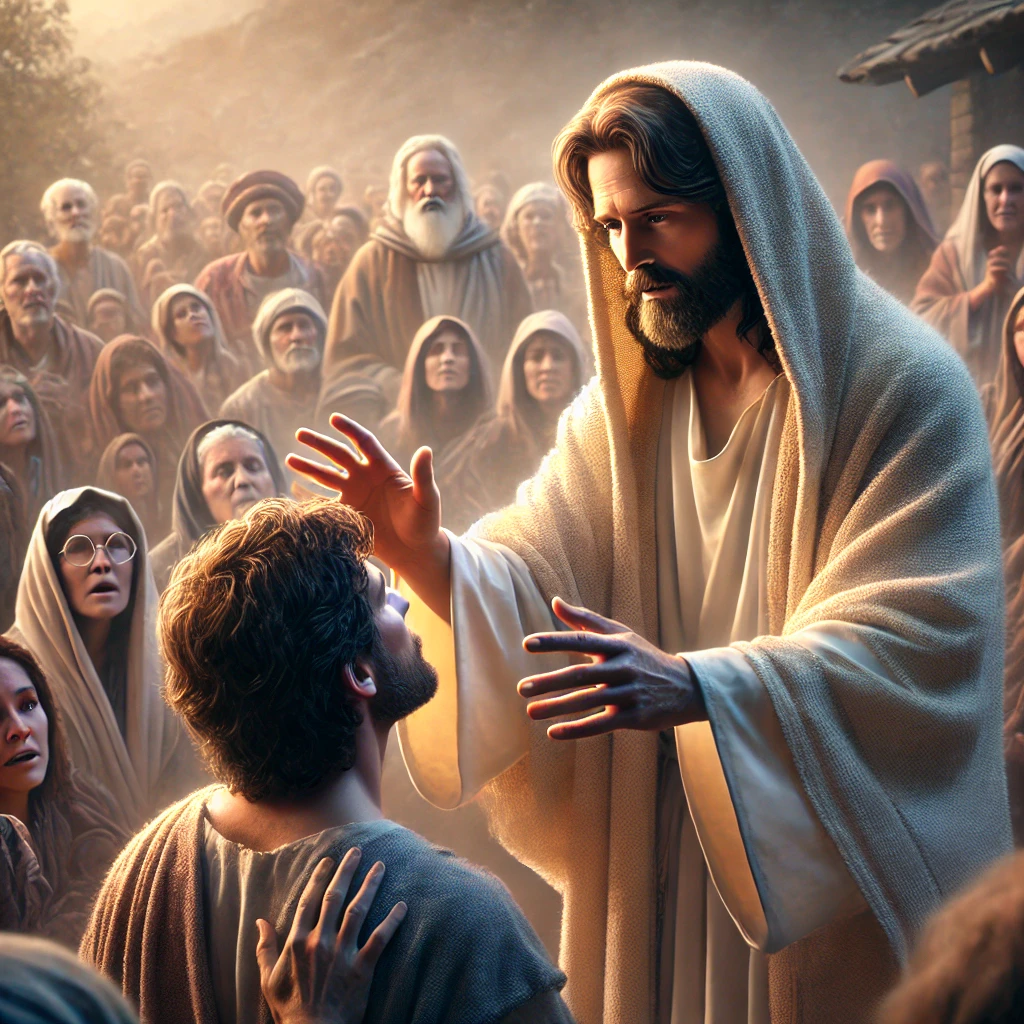Throughout the Gospels, Jesus’ healing miracles serve as powerful demonstrations of his compassion and divine power. His acts of healing were not only physical restorations but also carried deep spiritual significance, highlighting his mission to bring wholeness to individuals and communities. Each healing revealed Jesus’ concern for both the body and soul, showing that his work was about more than physical relief—it was about restoring people to full health in all aspects of life. Let’s explore how Jesus’ healing miracles reflect his compassion and his ability to restore both physical and spiritual well-being.
Compassion for the Suffering
Jesus’ miracles were often motivated by deep compassion for those suffering from illness, isolation, and social rejection. In Matthew 14:14, when Jesus saw a large crowd, “he had compassion on them and healed their sick.” His healings were not mere displays of power, but expressions of empathy for human suffering.
In the story of the healing of the leper (Mark 1:40-45), a man suffering from leprosy—an illness that led to both physical pain and social exclusion—approaches Jesus, saying, “If you are willing, you can make me clean.” Jesus, moved with compassion, not only heals the man but also touches him, something that was socially and religiously forbidden due to the contagious nature of the disease. This act of physical contact demonstrates Jesus’ willingness to restore the man’s dignity, healing not only his body but also his alienation from society.
Similarly, in the story of the woman with the issue of blood (Mark 5:25-34), a woman suffering for twelve years touches Jesus’ garment in faith, and she is healed. Jesus’ response is gentle and compassionate. Instead of rebuking her for breaking social and religious customs, he affirms her faith: “Daughter, your faith has healed you. Go in peace and be freed from your suffering” (Mark 5:34). Jesus acknowledges her spiritual and emotional needs alongside her physical healing, highlighting his holistic approach to restoration.
Restoring Physical and Spiritual Health
Jesus’ miracles of healing often went beyond the physical cure—they were acts of spiritual restoration. His healing miracles are frequently tied to the forgiveness of sins and the restoration of relationships between the individual and God.
One profound example is the healing of the paralytic in Mark 2:1-12. When Jesus is presented with a paralyzed man, he doesn’t immediately address his physical condition. Instead, Jesus says, “Son, your sins are forgiven” (Mark 2:5). This declaration causes a stir among the religious leaders, who question Jesus’ authority to forgive sins. In response, Jesus heals the man physically, commanding him to “get up, take your mat and go home” (Mark 2:11), proving that he has the authority to heal both body and soul. This dual healing emphasizes that Jesus came not only to relieve physical suffering but also to restore people’s spiritual relationship with God.
Breaking Social Barriers
Many of Jesus’ healing miracles also involved breaking down social barriers and restoring the dignity of those marginalized by illness or societal prejudice. In the ancient world, sickness was often seen as a sign of divine punishment or uncleanness, which led to the social isolation of those afflicted.
The story of Jesus healing the blind beggar Bartimaeus (Mark 10:46-52) highlights this dynamic. Bartimaeus, a blind man, was cast aside by society and left to beg. When he cries out for Jesus, the crowd tries to silence him, but Jesus stops, calls him forward, and heals him, saying, “Go, your faith has healed you” (Mark 10:52). This act not only restores Bartimaeus’ sight but also reinstates his place in society. Jesus’ healings consistently show his concern for restoring people’s social and spiritual inclusion.
Another significant example is the healing of the ten lepers (Luke 17:11-19). Lepers were isolated from society, yet Jesus heals them and, by doing so, allows them to return to their families and communities. One of the lepers, a Samaritan, returns to thank Jesus, and Jesus responds by affirming his faith: “Rise and go; your faith has made you well” (Luke 17:19). This story highlights not only physical healing but also the spiritual renewal that comes through faith in Jesus.
Faith and Healing
Throughout the Gospels, Jesus often emphasizes the connection between faith and healing. Many of those whom Jesus heals demonstrate remarkable faith, believing in his power to heal even before the miracle occurs. This faith is key to their healing, as seen in the story of the Roman centurion in Matthew 8:5-13. The centurion, a non-Jew, asks Jesus to heal his servant, expressing belief that Jesus’ word alone is enough to bring healing. Jesus marvels at the man’s faith and says, “Go! Let it be done just as you believed it would” (Matthew 8:13). The servant is healed at that very moment, illustrating that faith plays a central role in experiencing Jesus’ healing power.
Similarly, the Syrophoenician woman (Mark 7:24-30), a Gentile, seeks healing for her daughter and persists in faith, even after Jesus tests her by saying that the children’s bread (his healing power) should not be given to the dogs (a reference to Gentiles). Her humility and faith move Jesus to heal her daughter, demonstrating that faith transcends cultural and religious boundaries.
Healing as a Foretaste of the Kingdom of God
Jesus’ healing miracles were not only acts of compassion for individuals but also signs of the coming Kingdom of God. His healings pointed to a future reality where suffering, illness, and death would be eradicated. In Matthew 11:5, when John the Baptist’s disciples ask Jesus if he is the Messiah, Jesus responds by describing the signs of the Kingdom: “The blind receive sight, the lame walk, those who have leprosy are cleansed, the deaf hear, the dead are raised, and the good news is proclaimed to the poor.”
These healings foreshadow the ultimate restoration that will occur when God’s kingdom is fully realized. In his compassion and power, Jesus provided a glimpse of the wholeness and healing that will come in the age to come, where all will be made new.
Conclusion
Jesus’ healing miracles reveal his deep compassion for humanity and his power to restore both physical and spiritual health. Through these acts of restoration, Jesus addressed not only the body’s needs but also the heart’s need for forgiveness, inclusion, and relationship with God. His miracles went beyond individual healing, breaking social barriers and demonstrating the transformative power of faith. Ultimately, Jesus’ healings are signs of the coming Kingdom of God, where suffering and illness will be no more, and humanity will experience full restoration.



